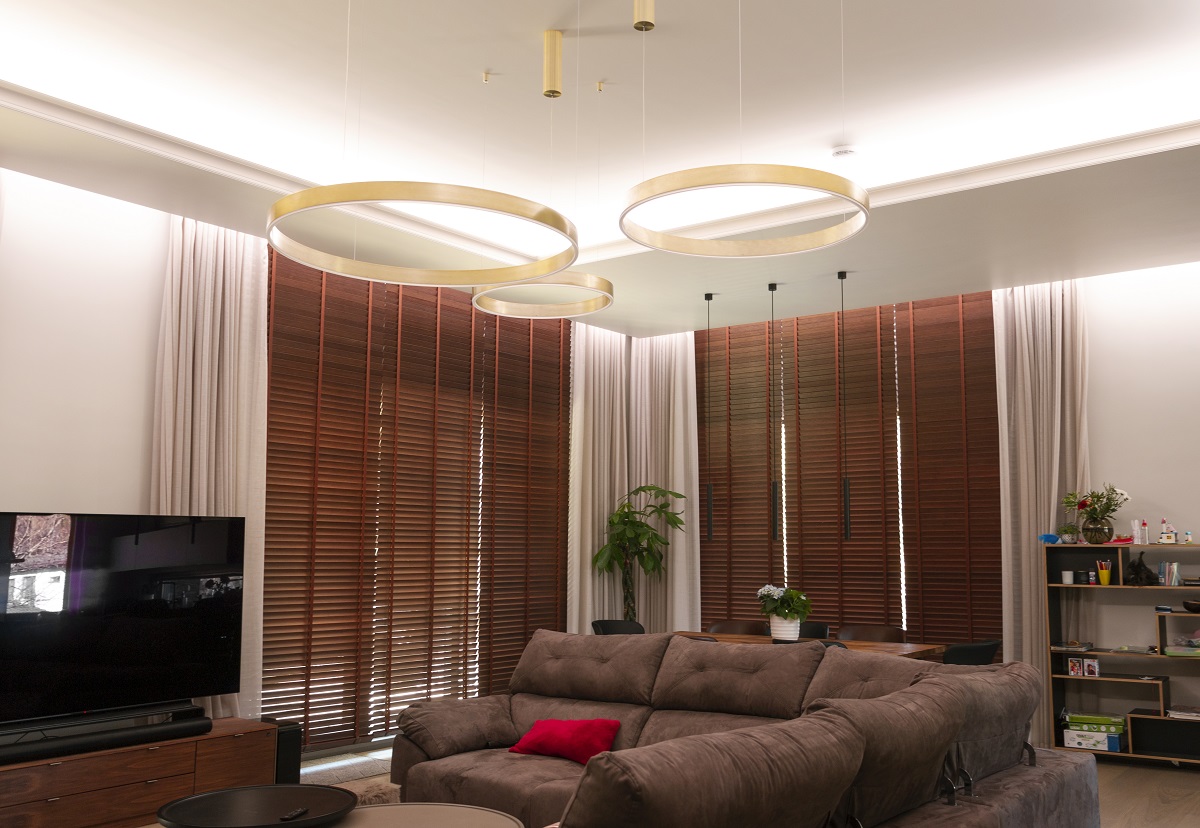Living room lighting design is the most important part of home lighting design. It’s a place to entertain guests, gather the family and watch TV under the blanket. So, depending on the situation, well-designed living room lighting will always meet the need and adapt to the situation. In this blog post, we explore some important aspects of living room lighting design and offer tips and ideas for creating the perfect living room lighting.
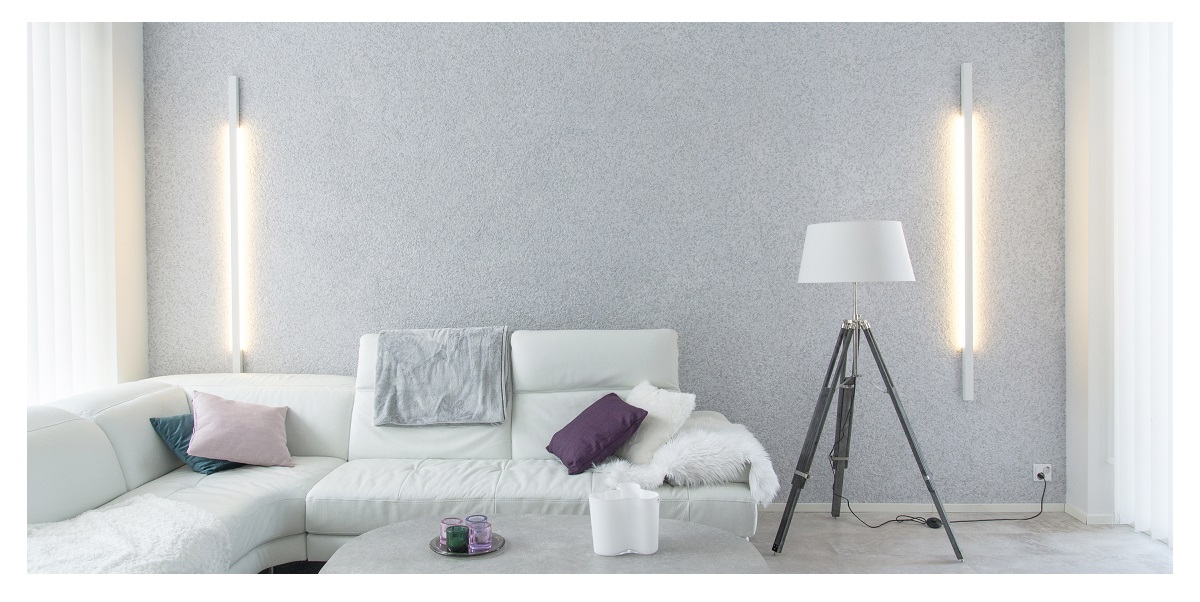
Light is one of the main drivers of our circadian rhythm and has a significant impact on our overall health and well-being. Even the lighting in the living room can be done intelligently, following the outdoor lighting, but here are just some ideas for lighting design.
Living room lighting – how to design lighting?
First, it is important to consider the primary functions of the living room and how lighting can support these functions. For example, do you need bright task lighting for reading? Or are you looking for a softer, more atmospheric light for relaxation? Is your home interior warmer or more neutral?
The lighting design of a living room is an important factor in creating a comfortable and functional space. By taking into account the main functions of the room and using a combination of different light sources, you can create lighting that meets your needs and enhances the overall atmosphere of the room. Remember to also take into account the colour temperature of the lamps and the role of natural light in the living room.
Please note: Large windows only serve half the year. In lighting design, windows are taken into account in the design, but not much value is added to the amount of light from the windows.
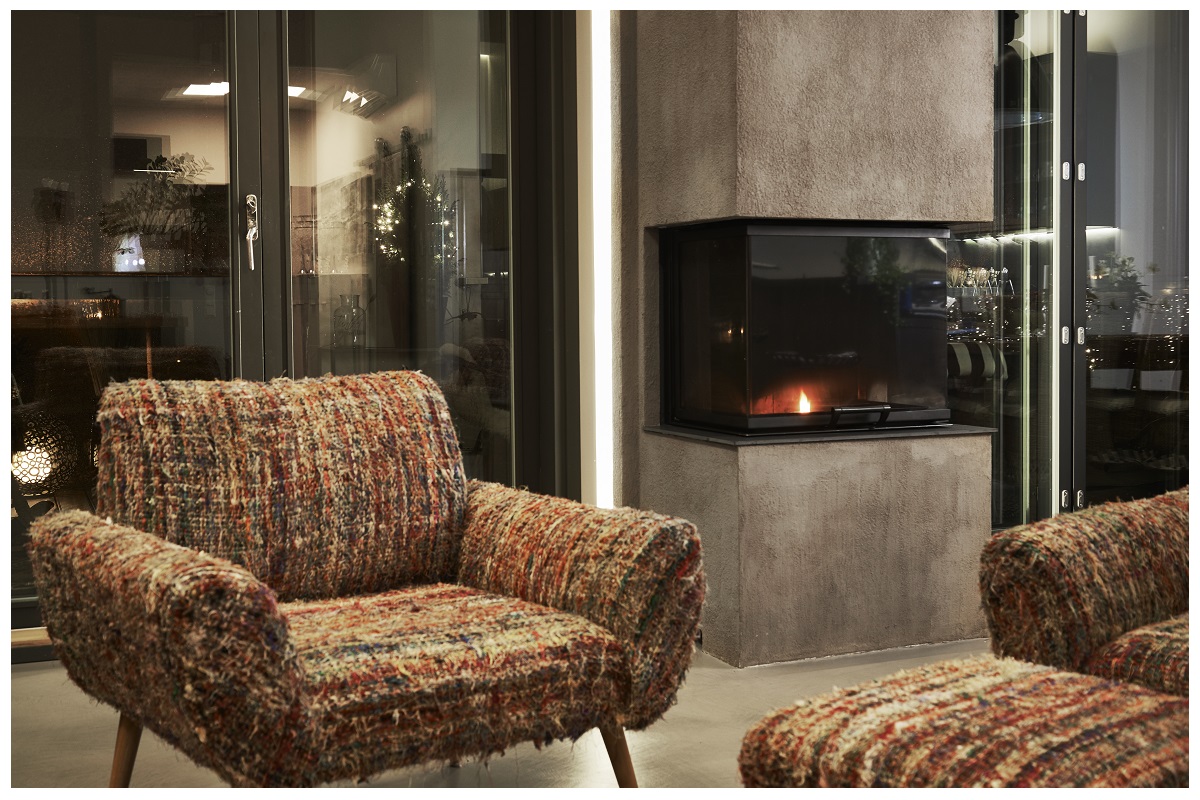
With the right lighting design, you can transform your living room into a relaxing and inviting place for family and guests, all year round.
Living room lighting design – Luminaire types
Ceiling lighting, such as a ceiling light or chandelier, can provide general illumination throughout a room and has often been the primary source of light in the living room. Nowadays, there are fewer pendant luminaires in the living room and the general lighting is more often provided by LED panel luminaires or LED spotlights. Select the light source you prefer and the counting of the number of luminaires starts according to the square footage and height of the space. Most high quality LED luminaires are also temperature adjustable.
Wall lights can be great for evening activities such as watching TV. They also add a decorative touch to a room and can be used to emphasise the height of a space.
Indirect lighting is the easiest way to make your living room look impressive. By lowering the ceiling at the edges or just leaving the light at the wall/ceiling boundary, you can create an atmosphere in even the largest of spaces. Not to mention layering a flat, boring roof. Play with light and highlight structures. The lighting design of a living room can also be a structural design.
Curtain lights
Curtain lights became very popular in the 80s. Back then, they were made a lot with fluorescent tubes. Nowadays, a lot of curtain lighting is done with Led stripon a large window wall, even if there is no curtain. So let’s use light to create curtains on the window surface. Of course, usually there are curtains and the LED strip is installed in front of the curtain, on the room side. For curtain lighting and indirect lighting in general, LED strips with temperature control are used in particular. With CCT LED strips, you can easily change the atmosphere of a room from fresh for cleaning to warm for an evening movie marathon.
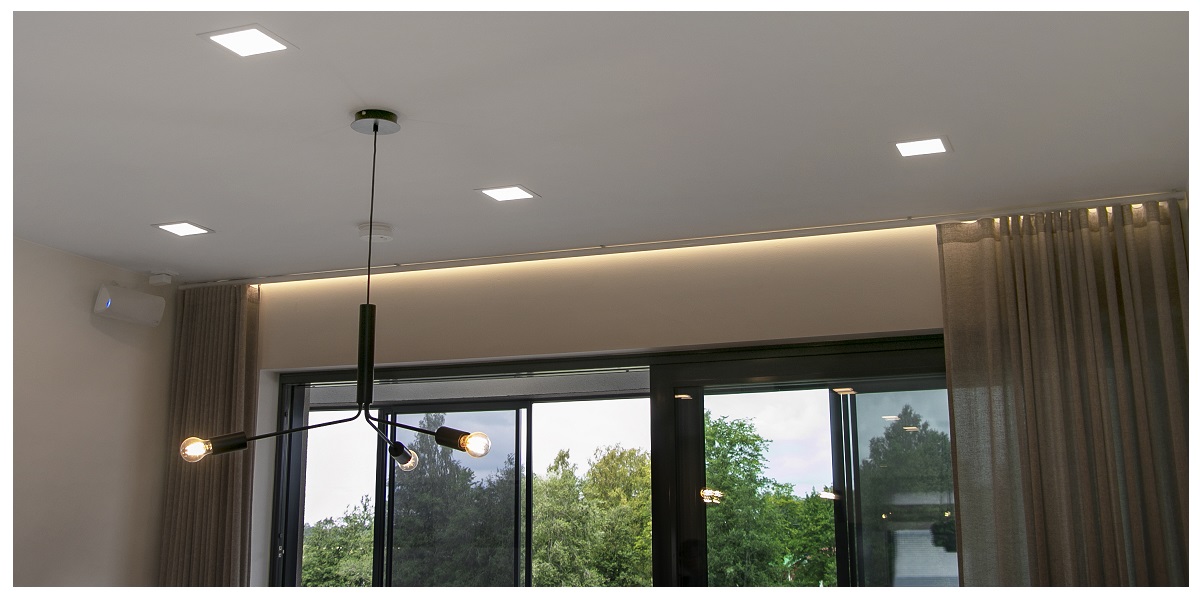
Indirect lighting in the living room
As in any space, layering the three basic lighting options (general lighting, indirect lighting and task lighting) will help you get the most out of your living room lighting options, and is key to creating an effective living room lighting design.
The most popular way to light a living room is indirect lighting. Indirect lighting in the living room gives the space an atmospheric look and with the right placement of the down counters, you can make your space look really stylish and luxurious in your home. There are also ready-made indirect LED profiles, which are an easy way to implement indirect lighting in your living room.
So there are different solutions for creating indirect light in the living room. Here are a few:
Calculate the edges of the roof, and illuminate the centre of the roof. The idea here is to carry the building services from the edges and thus leave the central area higher. Height difference usually 20-30cm
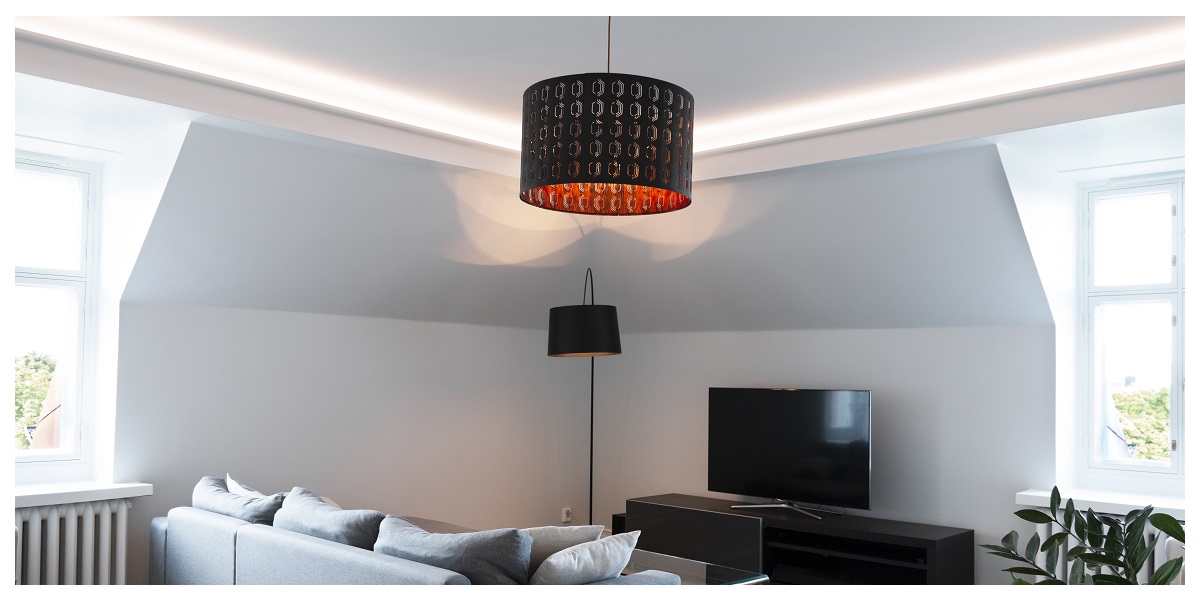
Leaving the edges of the roof incomplete at the roof assembly stage. In this method, indirect light comes down the wall.
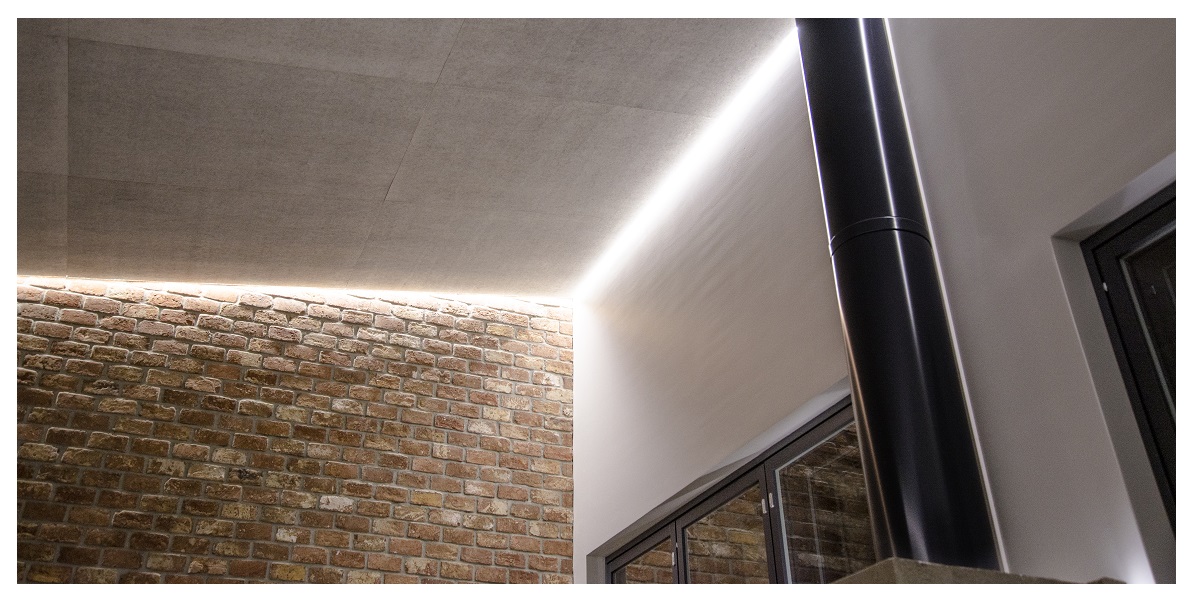
Retrofitted indirect light profiles. These can often be fully retrofitted, or if it is decided during the construction phase to use them as a replacement for the roof slate.
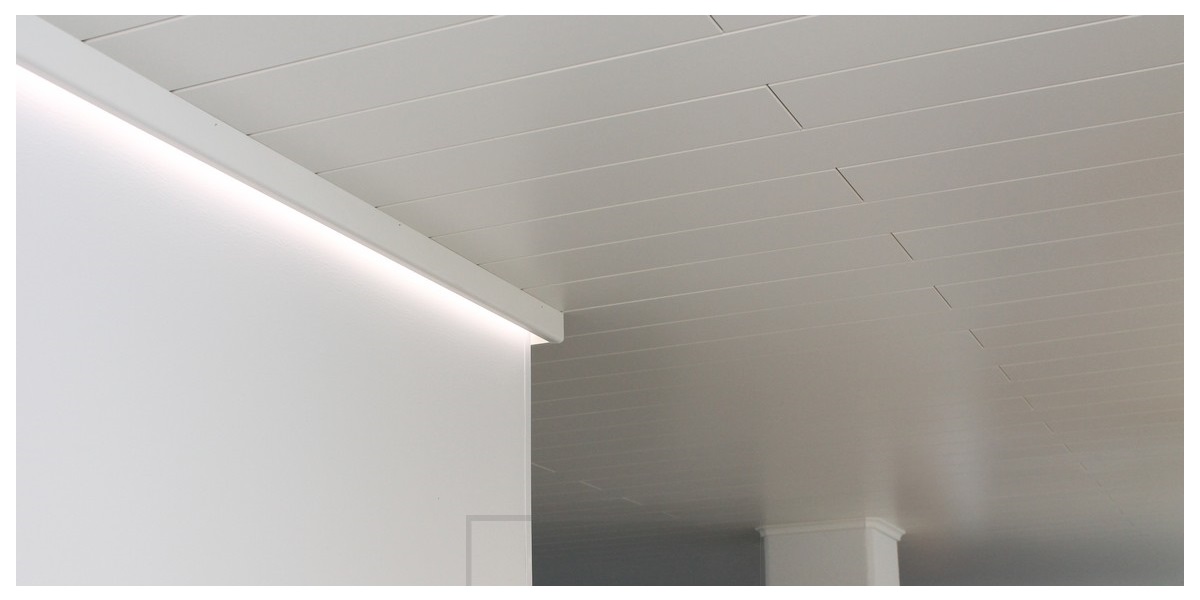
Led lights for living room ceiling
The most common led lights for living room ceilings are led spotlights or also known as led down lights. LED panels have also become very popular. As the space is usually large, we recommend using less of the more efficient luminaires. This is to reduce the number of holes in the roof and quickly the roof will start to resemble a cheese with holes…
Led panels, on the other hand, are either a few large ones that look like ceiling lights, or several smaller ones.
All high quality LED spots and LED panels are temperature adjustable.
Good general lighting
Good general lighting is achieved with indirect light or spot light combined with general light. Indirect light in front of curtains or in the ceiling brings invisible light into the space, which helps to create atmosphere, and is then complemented by spotlights and pendant lighting in the ceiling.
The narrow-angle lighting on a piano or table can help you relax. Accent lighting also allows you to diffuse light and draw your eye around the room, making the space feel larger and more balanced. When designing accent lighting for a living room, it is a good idea to know the furniture in the room.
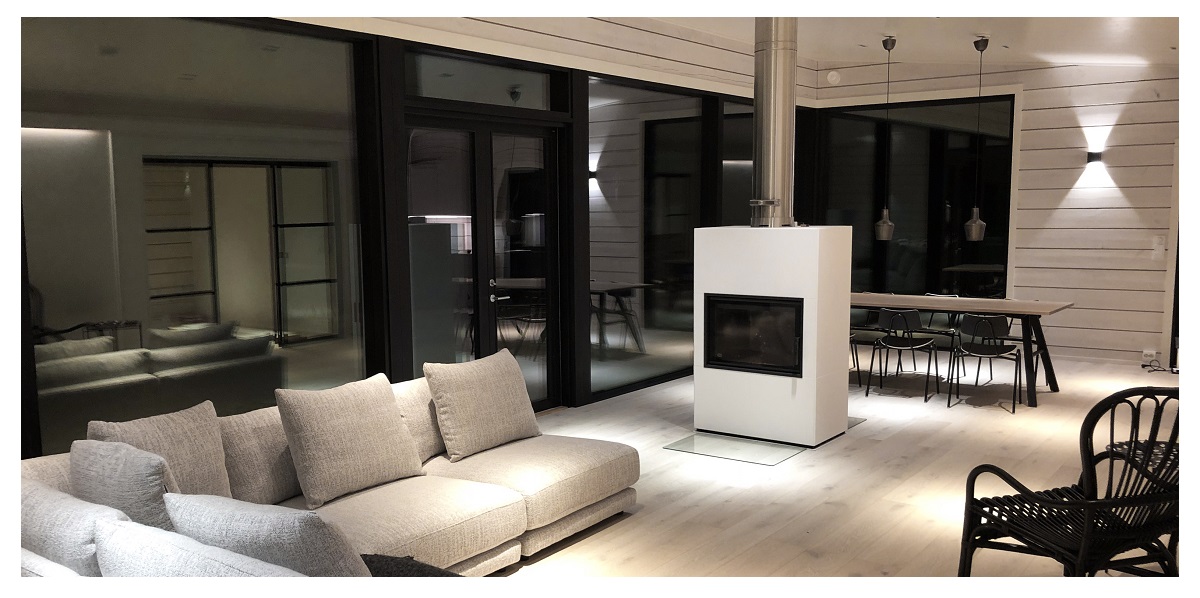
Living room LED lighting in different areas
If your living room functions as more than just a living room, you’ll want to add even more flexibility to your lighting design by creating zones. In addition to balancing light, creating lighting zones in different parts of a space can make lighting design and management easier. Such spaces can be a reading corner, a piano, a TV corner.
Ambient lighting for your living room
One of the easiest ways to use lighting to create atmosphere is to use dimmers and temperature-controlled lights. With temperature-controlled luminaires, the mood is always right.
Low living room lighting
Low space is always a challenge. Then you avoid using pendant lights and think about how to make the space feel higher. Roof lighting is an effective way to do this.
- The roof is well lit with a sloping roof from the edges. If the height of the space before lowering is more than 240 cm, we recommend lowering the ceiling from the edges by 15 cm to 20 cm, so that we can create a frame for the ceiling lighting.
- Another way to illuminate the ceiling is to use an indirect light profile and LED striplight designed for it.
- A third way is to put a vertical light surface in the corners, for example by using a corner LED profile.
If the whole ceiling can be lowered by even 5 cm, then all lighting options are possible. Spot/panel lights + indirect light.
The best solution for this is a combination of down lights and indirect light, which can be freely temperature adjusted and dimmed as needed. In other words, the same lighting can make it warm or cool if you want!
Lighting for a high living room
High space also creates its own challenges. Depending on the luminaire, the luminaire loses about 90% of its luminous intensity over a distance of 6 metres from the ceiling to the floor, and pendant luminaires with 3-4 metre cables are harder to find. The solution is to bring the light sources lower, halfway down the room.

- Indirect lighting at mezzanine level. For example, an indirect LED profile between windows. This way the light source is lower and the lower power is sufficient
- Another way is to use luminaires with a narrow beam so that the light output is not lost so much over the distance. Note that there should be several of these lamps if you want to avoid light and shadow play, as the narrow spotlight is visible on the floor and of course this is not the only source of light.
- A third way is to install wall lights around the perimeter at a lower level.
- a fourth method is to embed an LED striplight in the floor next to the walls, so that the wall surface acts as a reflector.
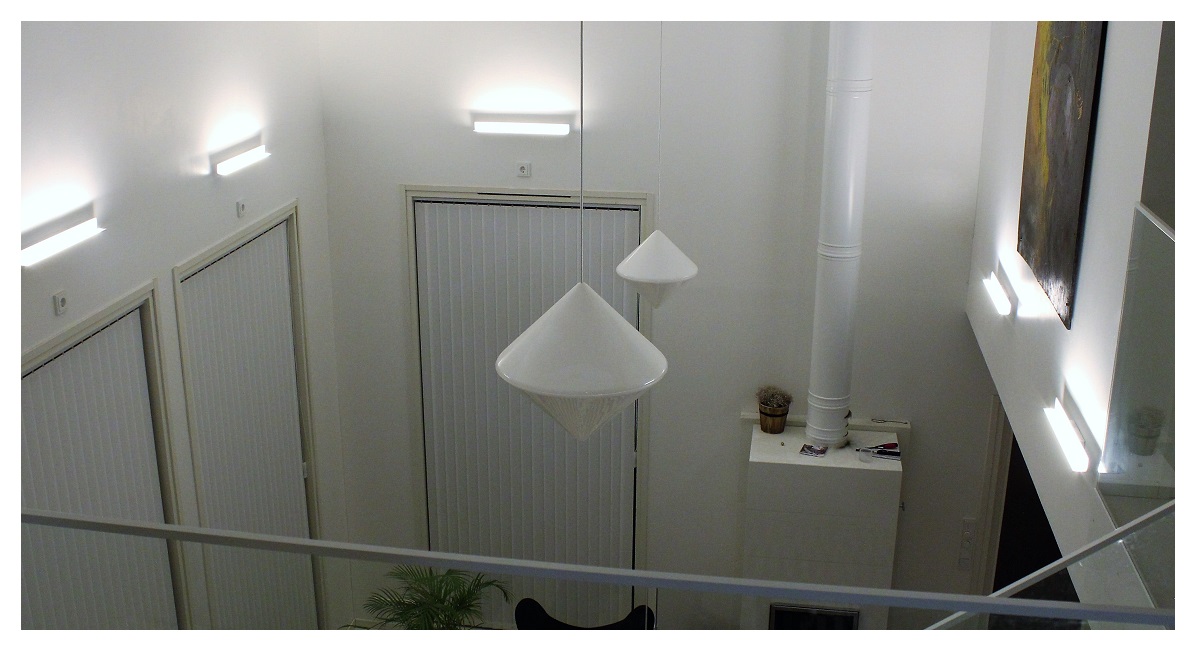
Living room ceiling light – What size light?
Getting a ceiling light for the living room is a challenge in itself. How many square metres and how high is the room? What is your interior design style? So finding a pendant light for your living room is not easy. For example, a RINKELI 100cm gives 3000 lumens on the sides, so yes you can watch TV in the room, but for working, reading, etc. is not yet possible without a supplementary lamp.
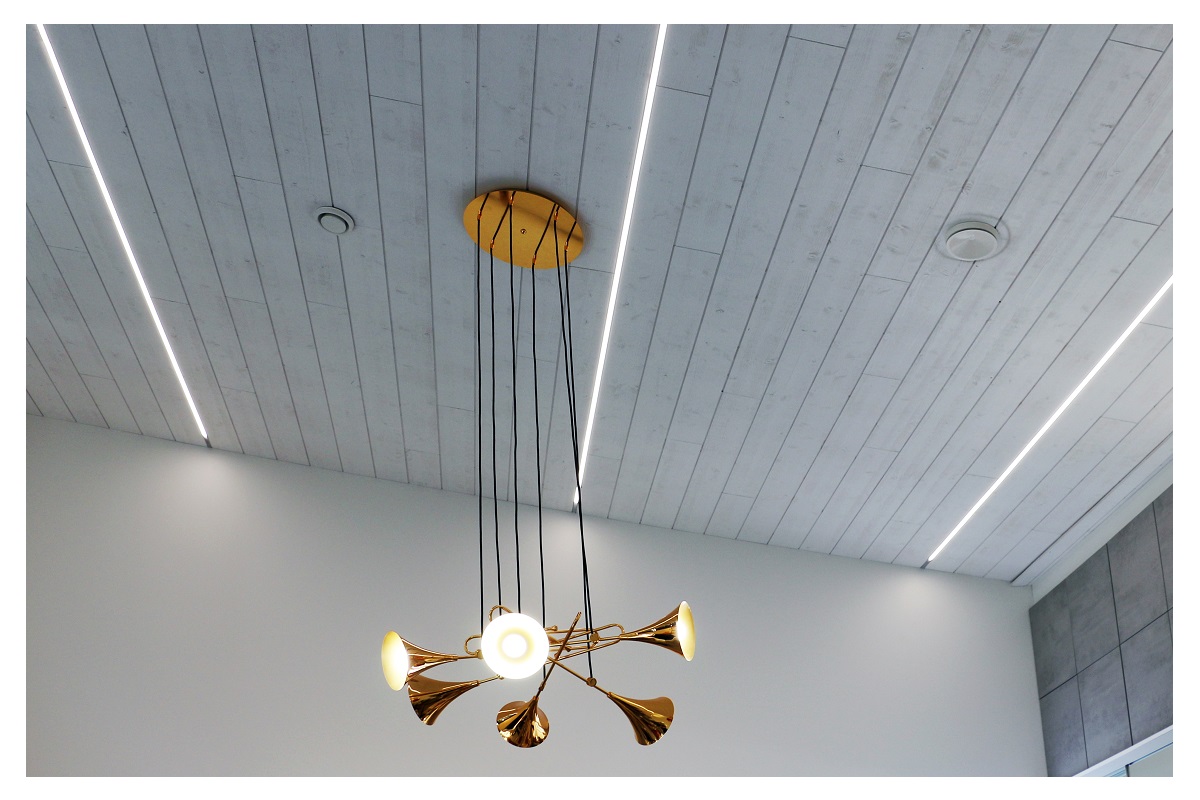
Large LED panels provide even general lighting and for example in a 20m2 living room 2 large 600×1200 LED panels provide good general lighting.
Only use luminaires with a high CRI or colour rendering index. So quality light helps you see better and, most importantly, a red sofa cushion is still red and not purple.
Amount of light in living room lighting
This brings us to the topic of the amount of light in the living room. The brightness and colour temperature of lighting can both have a positive or negative impact on your activities and general well-being. If the lighting is warm all the time (3000K) I notice that you are more tired and your vision is slightly worse than in fresh lighting.
Therefore, adjusting the temperature of the light is important and these things can be taken into account when designing the lighting in your living room. Fresh light in the morning and early evening and warmth towards evening when you want to relax. It has also been studied that sleep is better when the body receives less blue light. When choosing the right luminaires for your living room lighting, there are two things to consider: lumens and light colour temperature.
Lumen in the living room
When LEDs are very energy efficient, looking at watts in the traditional way doesn’t help. Lumens are used.
For example, the total number of lumens in a 20m2 light living room will vary between around 2000 and 4000, depending on your personal preference for the space. If the room is dark or high, this figure can easily be doubled or tripled. This figure is then divided between the different sources of light. Different light intensities are recommended for different uses and lighting zones:
- Night luminaires 50-100 Lumen
- Reading point 1000 lumens
The lighting design of a living room takes into account the amount of light when the types of lighting are known.
What’s the temperature in the living room?
Colour temperature is one of the most important aspects of living room lighting, as it can have a significant impact on our wakefulness and productivity.
2500-3500K Warm light helps you fall asleep and relax, and creates a cosy atmosphere.
4000K-6500K Cooler white and blue light have been shown to promote alertness by inhibiting melatonin production, making them ideal for task lighting in the workspace.
The right solution for multi-purpose spaces is always to use CCT LED luminaires. This ensures that the amount of light and the temperature of the light is right for each task.
What does it cost to light your living room?
Are you ready to design your living room lighting? Then you’re probably wondering how much will living room lighting cost? The cost of living room lighting is affected by the use of the space. Will there be indirect light, etc..
Living room lighting ideas
In this gallery you will find direct living room lighting ideas:
Indirect lighting in the living room
Different types of living room lamps and their use in living room lighting design
Finally, here is a summary of the types of lighting used in the living room. By choosing the right lamps for your living room lighting, you can create a functional and atmospheric environment.
Indirect light: indirect light creates limitless solutions to create mood. Wall lighting through the ceiling or ceiling lighting through the walls. Indirect light is usually always built with downlights and LED stripin profile. Indirect light can also be retrofitted with a profile.This is the most important aspect of living room lighting design. LED PROFILE
Spotlights: spotlights are lights used to highlight specific features or areas. They are mounted on the ceiling like general lighting spots, but have a narrow beam. LINJA SPOTIT.
General lights: general lights are spotlights with a wider beam or a plafond for the bedroom. As their name suggests, they bring general light into a space. LINJA SPOTIT.
Step lights: step lights are small, low-level lights used to illuminate a corridor or pathway. They can be embedded in walls so that people can navigate safely in the dark. INWALL
Wall lights: wall lights are lights mounted on the walls of a room. They can be used for general lighting or to create atmosphere. FUNK WALL
Pendant lights: pendant lights are decorative lights that are often used to add atmosphere to outdoor spaces. They can be hung from the roof of a porch or covered terrace.
Some other lighting design articles:
How does home lighting design affect you?
Led lighting expert
LedStore has been an expert in LED lighting and lighting design since 2010. We have our own product design, so our products are technically state-of-the-art. We are also very familiar with the design of living room lighting.
We focus on temperature-controlled and high colour rendering luminaires, so they work brilliantly in the modern bedroom, which is often also a multi-functional space. We make around. 500 lighting designs for our clients’ sites. Read more here or order a design
We offer a service of custom-made LED strips, i.e. custom-made LED strips in aluminium profile. Also installed. Did you know? LedStore offers lighting design from 99 euros for the whole house!
Remember that we are always available to support you along the way, by email(myynti@ledstore.fi) and by phone (045 251 4510). As always, feel free to share photos of your own projects on social media at #ledstorefi IG and ledstore.fi FB. We love to see the cool things our LEDs do, and it helps to provide inspiration for those who are not sure about the power and awesomeness of LEDs. Did you know that we already have over 3500 pictures of our LED installations in our Gallery!
A picture gallery of LED lights to help you design your living room lighting:
Product gallery: pictures of products in different installation locations
Indirect light: indirect light in different spaces
Room-specific: Light in different rooms
References: complete houses that have been photographed

